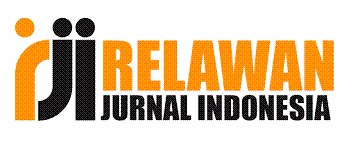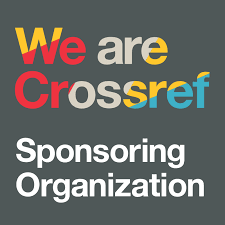Promoting Students' Creative Thinking Through Activities Exploring The Surrounding Nature: A Stem Project-Based Learning Design For Sets
Abstract
This study aims to describe the process and results of the development of STEM-Surrounding-Nature-Exploration (SNE) integrated with PjBL-based learning materials to improve students' creative thinking skills on sets concepts This is developmental research using the Plomp model to develop learning materials in the form of Teaching Modules and Project Worksheets for set materials with a STEM-SNE integrated project learning design. The trial was conducted on 31 grade 7 students at a junior high school in Surabaya, East Java. Data collection and analysis techniques were carried out using validation sheets to determine the validity of the learning materials tested on the validator. A pre-test and a post-test were used to measure effectiveness related to students' creative thinking on set material. In addition, student response sheets were also used to determine the practicality of the learning materials. Results found that the learning device obtained a validity criterion of 92.5% for the Project Worksheet while 91.25% for the validity of the Teaching Module and each was classified as very valid. For effectiveness criteria, it was obtained n-gain of 0.7512 in the limited trial and 0.71 in the class trial and each of them obtained high effectiveness criteria. Learning materials obtain very practical criteria implemented with an average student response acquisition of 85% and 84% for project learning designs.
References
Adilistiyo, Egie, M., & W., SH (2017). Analysis of Class VII Middle School Students' Errors in Solving Problems on Set Material (p. 4) [Thesis Thesis]. http://eprints.ums.ac.id/id/eprint/53599
Ameer, A., Majeed, B., & Alrikabi, H. (2021). The Impact of Teaching by Using STEM Approach in The Development of Creative Thinking and Mathematical Achievement Among the Students of The Fourth Scientific Class. International Journal of Interactive Mobile Technologies (IJIM), 15 , 172–188. https://doi.org/10.399/ijim.v15i13.24185
Andiyana, MA, Maya, R., & Hidayat, W. (2018). Analysis Of Junior High School Students' Mathematical Creative Thinking Ability in Construction Materials. JPMI (Journal of Innovative Mathematics Learning), 1 (3), 239–248. https://doi.org/10.22460/jpmi.v1i3.p239-248
Ayuningsih, F., Malikah, S., Nugroho, MR, Winarti, W., Murtiyasa, B., & Sumardi, S. (2022). PjBL STEAM-Based Polynomial Mathematics Learning Grows Student Creativity. Basicedu Journal , 6 (5), 8175–8187. https://doi.org/10.31004/basicdu.v6i5.3660
Beneroso, D., & Robinson, J. (2022). Online project-based learning in engineering design: Supporting the acquisition of design skills. Education for Chemical Engineers , 38 , 38–47. https://doi.org/https://doi.org/10.1016/j.ece.2021.09.002
Darmadi, Edy Suprapto, Ika Krisdiana, & Reza Kusuma Setyansah. (2021). 21st Century Mathematics Learning Innovation. CV. AE Media Graphics.
Darwanto, D. (2019). Mathematical Creative Thinking Ability. Exponent , 9 (2), 20–26. https://doi.org/10.47637/eksponen.v9i2.56
English, LD, & King, DT (2015). STEM learning through engineering design: fourth-grade students' investigations in aerospace. International Journal of STEM Education , 2 (1). https://doi.org/10.1186/s40594-015-0027-7
Firdaus, AR, Wardani, DS, Altaftazani, DH, Kelana, JB, & Rahayu, GDS (2020). Mathematics learning in elementary school through engineering design process method with STEM approach. Journal of Physics: Conference Series , 1657 , 012044. https://doi.org/10.1088/1742-6596/1657/1/012044
Fitzallen, N. (2015). STEM Education: What does mathematics have to offer? (pp. 237–244). Mathematics Education Research Group of Australasia.
Hadiyanti, NFD, Hobri, Prihandoko, AC, Susanto, Murtikusuma, RP, Khasanah, N., & Maharani, P. (2021). Development of mathematics e-module with STEM-collaborative project based learning to improve mathematical literacy abilities of vocational high school students. Journal of Physics: Conference Series , 1839 (1), 012031. https://doi.org/10.1088/1742-6596/1839/1/012031
Hafiz, NRM, & Ayop, SK (2019). Engineering Design Process in Stem Education: A Systematic Review. Human Resource Management Academic Research Society , 9 (5), 676–697. https://doi.org/10.6007/IJARBSS/v9-i5/5998
Indriani, KW Ade. (2020). Increasing Students' Mathematical Thinking Ability In Flat Building Materials Through Stem Integrated Project Learning Models. Mathematics Education Media , 8 (1), 51. https://doi.org/10.33394/mpm.v8i1.2462
Isdiarti, F. (2022). Analysis of Creative Thinking Ability of Class VII Students of MTs Muhammadiyah Karangkajen Yogyakarta. Proceedings of the Annual Conference on Madrasah Teacher , 2 , 417–421. https://vicon.uin-suka.ac.id/index.php/ACoMT/article/view/1141
Khamhaengpol, A., Sriprom, M., & Chuamchaitrakool, P. (2021). Development of STEAM activity on nanotechnology to determine basic science process skills and engineering design processes for high school students. Thinking Skills and Creativity , 100796. https://doi.org/10.1016/j.tsc.2021.100796
Kozlowski, JS, Chamberlin, SA, & Mann, E. (2019). Factors that Influence Mathematical Creativity. The Mathematics Enthusiast , 16 (1-3), 505–540. https://doi.org/10.54870/1551-3440.1471
Le, LTB, Tran, TT, & Tran, NH (2021). Challenges to STEM education in Vietnamese high school contexts. Heliyon , 7 (12), e08649. https://doi.org/10.1016/j.heliyon.2021.e08649
Li, Y., & Schoenfeld, A.H. (2019). Problematizing teaching and learning mathematics as “given†in STEM education. International Journal of STEM Education , 6 (1). https://doi.org/10.1186/s40594-019-0197-9
Lin, K., Wu, Y., Hsu, Y., & John, WP (2021). Effects of infusing the engineering design process into STEM project based learning to develop pre-service technology teachers' engineering design thinking. International Journal of STEM Education , 8 , 1. https://doi.org/10.1186/s40594020002589
Lutfi, Ismail, & Azis, AA (2018). The Effect of Stem Integrated Project Based Learning on Scientific Literacy, Creativity and Student Learning Outcomes. Proceedings of the National Seminar on Biology and Its Learning , 189–194.
Maass, K., Geiger, V., Ariza, MR, & Goos, M. (2019). The Role of Mathematics in interdisciplinary STEM education. ZDM, 51 (6), 869–884. https://doi.org/10.1007/s11858019011005
Marliani, N. (2015). Improving Students' Mathematical Creative Thinking Skills through the Missouri Mathematics Project (MMP) Learning Model. Formative: Scientific Journal of MIPA Education , 5 . https://doi.org/10.30998/formatif.v5i1.166
MartÃn-Páez, T., Aguilera, D., Perales-Palacios, F. J., & VÃlchez-González, J. M. (2019). What are we talking about when we talk about STEM education? A review of literature. Science Education, 103(4), 799–822.
Nurjanah, Labulan, PM, & Haryaka, U. (2020). Identification Of Students' Mathematics Learning Difficulties In Class Vii Students Of Smp Budi Luhur Samarinda In The Material Of Assistance. National Seminar On Mathematics, Science, Geography, And Computer Education, 71–76.
Nurtasari, AR, Jamiah, Y., & Suratman, D. (2017). Student's Misconceptions About Collection Materials In Grade VII of SMP Santa Monika Kubu Raya. Equatorial Journal of Education and Learning (JPPK) , 6 (2), 1–10.
Oktadila, N., Yerizon, Musdi, E., & Asmar, A. (2022). Development of Mathematical Learning materials with the Integrated Science Technology Engineering And Mathematics (STEM) Project Based Learning Model in Improving the Mathematical Reasoning Ability of Grade VII Middle School Students. JEMS (Journal of Mathematics and Science Education) , 10 (1), 103–110. https://doi.org/10.25273/jems.v10i1.11945
Plomp, T., & Nieveen, N. (2013). Educational design research. Part A : an introduction . Slo.
Pratiwi, WNF, & Rita P. Khotimah, S. (2016). Analysis of Students' Learning Difficulties in Association Materials at SMP Muhammadiyah 10 Surakarta in the 2015/2016 Academic Year . Eprints.ums.ac.id. http://eprints.ums.ac.id/id/eprint/48132
Priatna, N., Avip, B., & Mulyati Mustika Sari, R. (2022). The Effectiveness of Project Based Learning-STEM and Student Mathematical Problem Solving in Trigonometry Material. SJME (Supremum Journal of Mathematics Education) , 6 (2), 151–161. https://doi.org/10.35706/sjme.v6i2.6588
Putra, HD, Akhdiyat, AM, Setiyani, EP, & Andiarani, M. (2018). Mathematics Creative Thinking Ability of Middle School Students in Cimahi. KREANO , 9 (1), 47–53. https://doi.org/http://dx.doi.org/10.15294/kreano.v9i1.1247
S, M., & Xaverius, APF (2020). Discovery and Exploration of the Surrounding Nature (SNE) Approach to Learning the Concept of Classification of Living Things. Journal of Biology Education , 3 (1), 44. https://doi.org/10.21043/jobe.v3i1.7131
Sagala, R., Umam, R., & Thahir, A. (2019). The Effectiveness of STEM-Based on Gender Differences: The Impact of Physics Concept Understanding. European Journal of Educational Research, 8(3), 753–761. https://doi.org/10.12973/eu-jer.8.3.753
Şahiner, e., & Koyunlu ünlü, z. (2022). Mühendislik Tasarım Süreci Etkinliklerinin Sınıf Öğretmen Adaylarının STEM Farkındalıkları and Mühendislik Algıları Üzerine Etkisi. Cumhuriyet International Journal of Education . https://doi.org/10.30703/cije.971521
Saputro, B. (2017). Research & Development Management For Thesis And Dissertation Preparation (1st ed., p. 8). Aswaja Presindo.
Sirajudin, N., Suratno, J., & Pamuti. (2021). Developing creativity through STEM education. Journal of Physics: Conference Series , 1806 (1), 012211. https://doi.org/10.1088/1742-6596/1806/1/012211
Soeviatulfitri, & Kashardi. (2020). Students' Mathematical Creative Thinking Ability through the Problem Based Learning (PBL) Model and the Osborn Learning Model in Middle School. Rafflesia Journal of Mathematics Education , 5 (3), 35–43. https://doi.org/https://doi.org/10.33369/jpmr.v5i3.11502
Sumarni, W., & Kadarwati, S. (2020). Ethno-stem project-based learning: Its impact to critical and creative thinking skills. Jurnal Pendidikan IPA Indonesia, 9(1), 11-21.
Suripah, S., & Sthephani, A. (2018). Students' ability to think creatively mathematically in solving cube roots of complex equations based on the level of academic ability. Pythagoras: Journal of Mathematics Education , 12 (2), 149–160. https://doi.org/10.21831/pg.v12i2.16509
Syahnaz, RAGL (2021). Analysis of Creative Thinking Ability in View of Learning Styles in Class VII Student Association Materials at SMPN 1 Pakisaji (pp. 32–45) [Thesis Thesis].
Syamsi, A. (2014). An Innovation in Mathematics Learning Based on Simple Teaching Aids). Eduma : Mathematics Education Learning and Teaching , 3 (1), 17–31. https://doi.org/10.24235/eduma.v3i1.4
Syukri, M., Halim, L., & Mohtar, LE (2017). Engineering Design Process: Cultivating Creativity Skills through Development of Science Technical Products. JOURNAL OF FIZIK MALAYSIA , 38 (1).
Tulalessy, QD (2018). Environment Based Language Learning As An Effort To Build Ecological Intelligence. Triton Pendidikan Journal , 1 (1), 51. https://doi.org/10.30862/jtp.v1i1.795
Yulianti, D., Wiyanto, Rusilowati, A., & Nugroho, SE (2020). Student worksheets based on Science, Technology, Engineering and Mathematics (STEM) to facilitate the development of critical and creative thinking skills. Journal of Physics: Conference Series , 1567 , 022068. https://doi.org/10.1088/1742-6596/1567/2/022068
Yunita, Y., Juandi, D., Tamur, M., Adem, AMG, & Pereira, J. (2020). A meta-analysis of the effects of problem-based learning on students' creative thinking in mathematics. Beta: Journal of Tadris Mathematics, 13 (2), 104–116. https://doi.org/10.20414/betajtm.v13i2.380

























